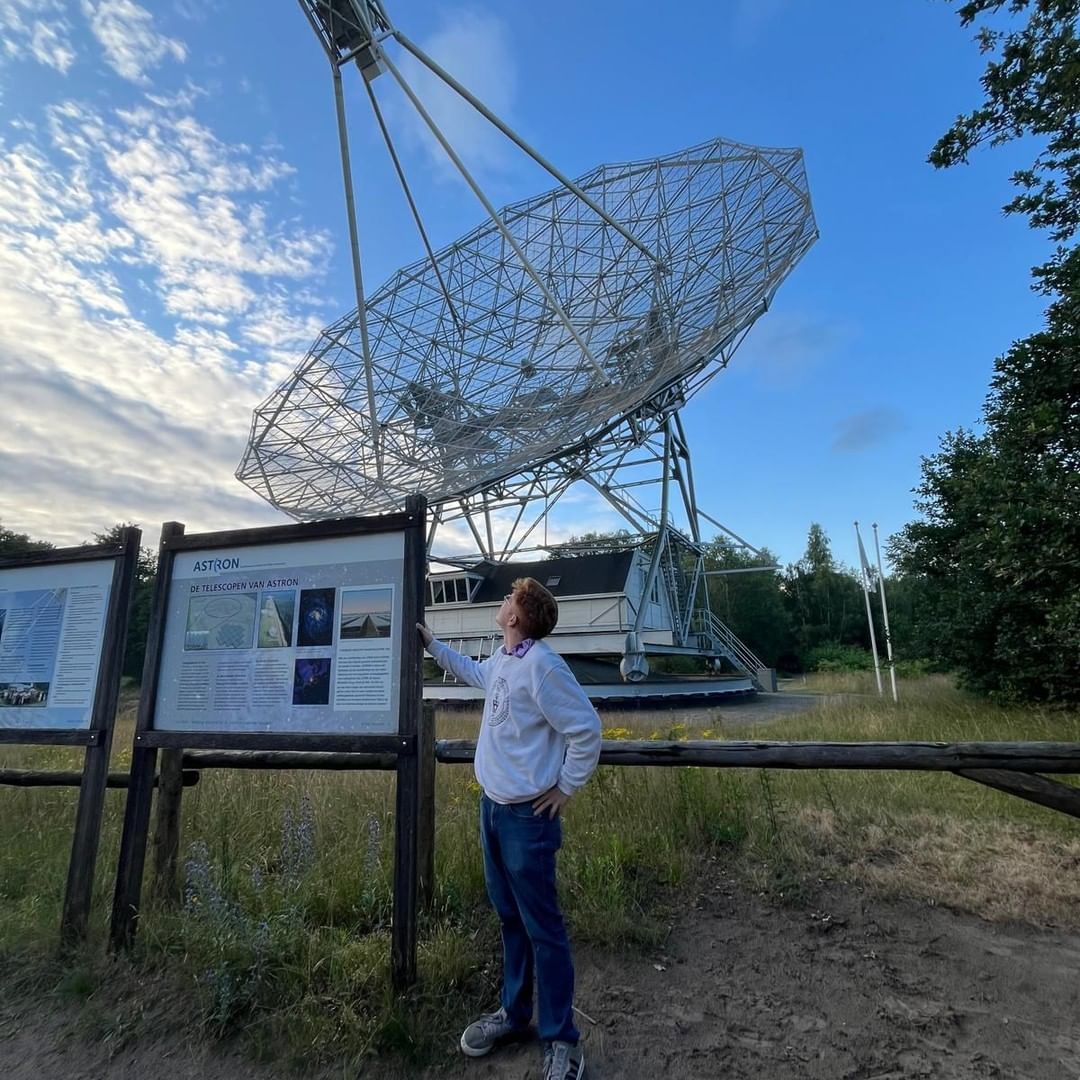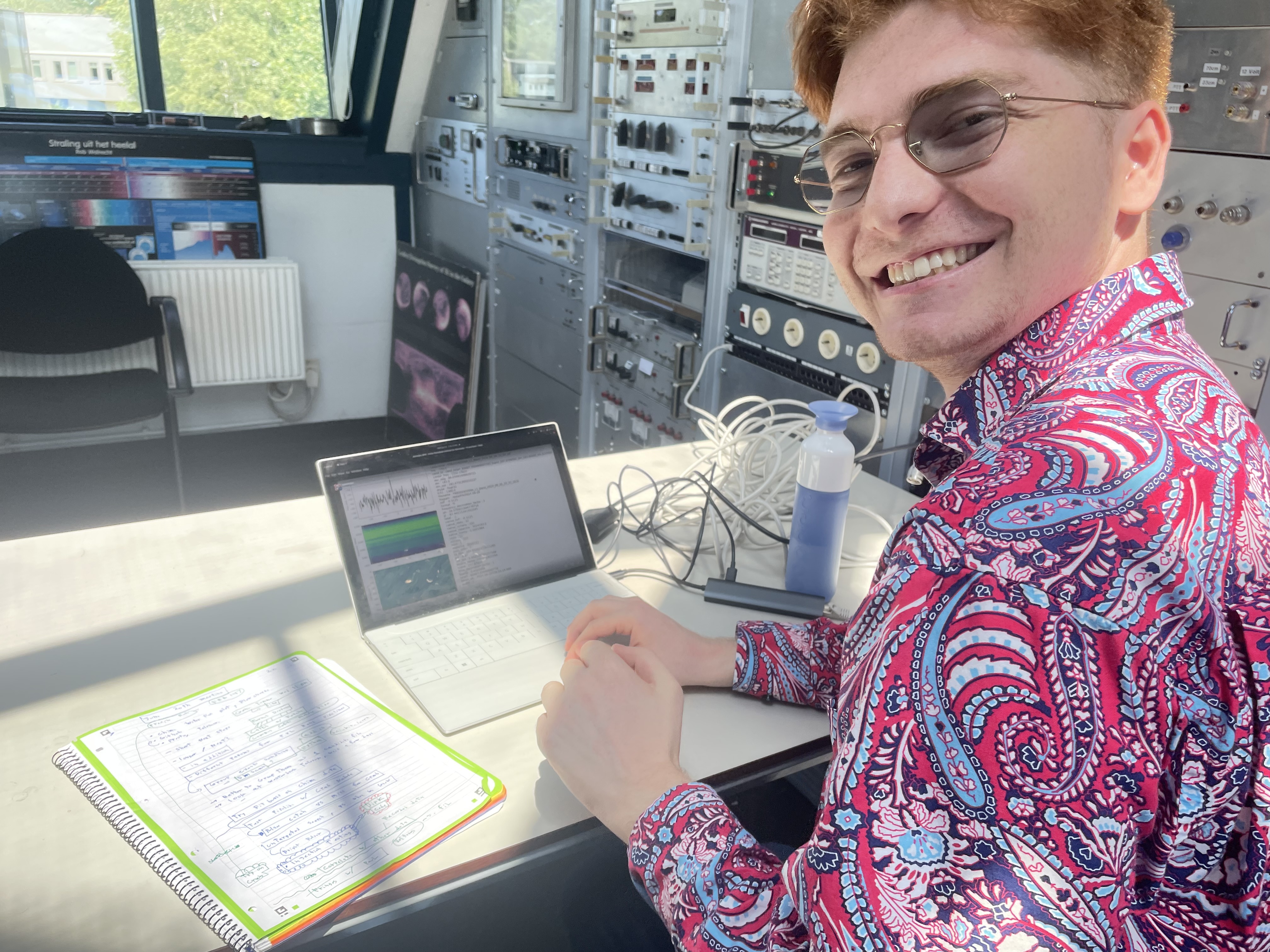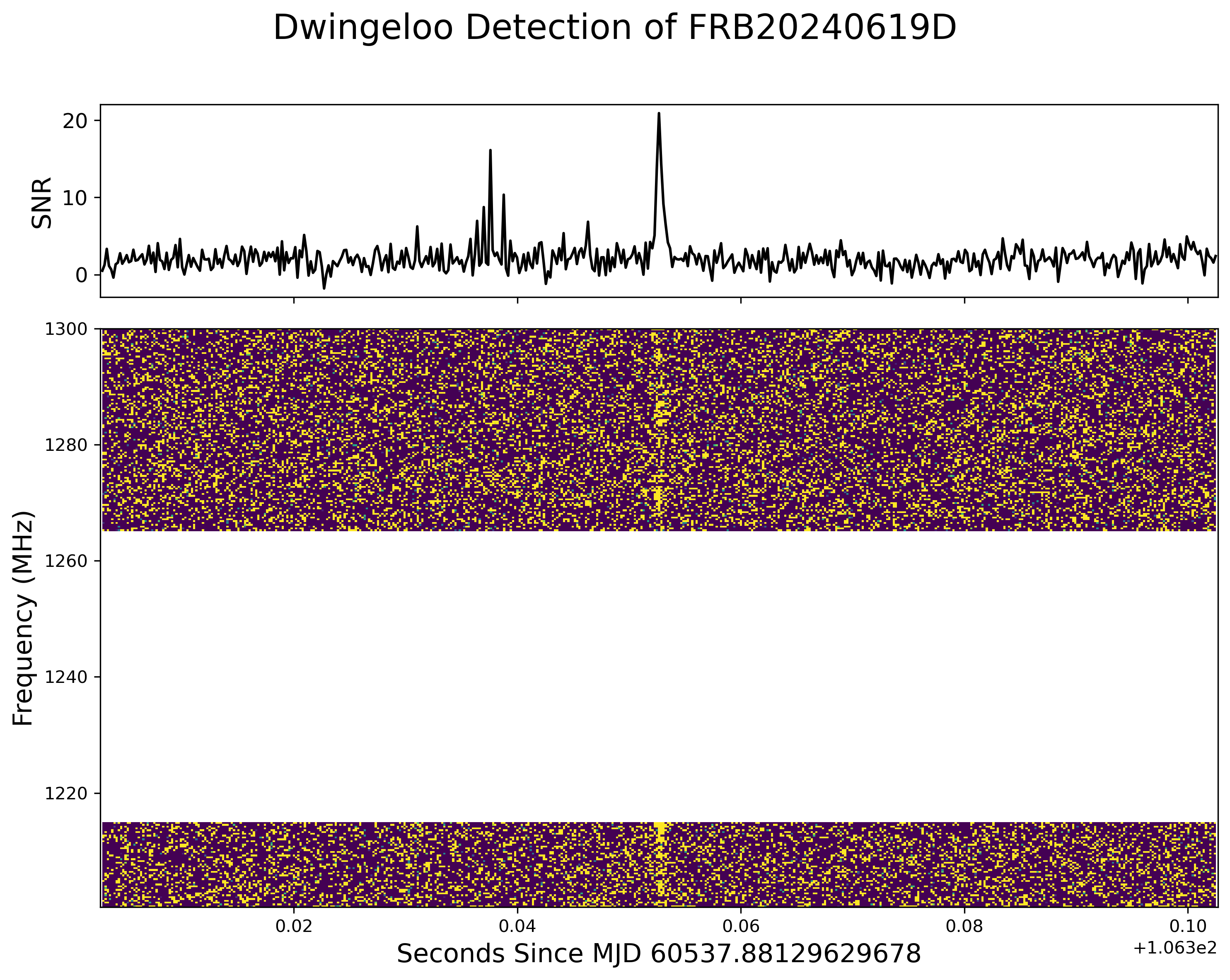About Me
About Me:
Greetings and well wishes to all who may encounter this message!
My name is Max Fine. I'm a graduate student studying Physics & Astrophysics (📡💫)
at the University of Amsterdam. I earned my undergraduate degree from the University of Toronto (with Honors)
in Canada! I am originally from St. Augustine, Florida. I'm passionate about exploring the unknown, improving our
understanding of the cosmos, and adding to the collective knowledge of humankind. I believe that science has the
power to change the world and I'm eager to contribute to that change in any way I can.
While I currently live in the Netherlands, I hold dual citizenship in the USA and Canada,
which enables me to work & live in both countries. As a UofT graduate, I additionally qualify
for the High Potential Individual visa (UK work visa).
When I'm not studying the stars, you can often find me exploring cafes and searching for the perfect latte. If it is not raining, playing frisbee in a park.
I enjoy reading and tinkering with Raspberry Pis.
My dream is to live the adventurous life of a scientific researcher.
I would like to earn a PhD in radio astronomy related to FRBs, and serve in the Peace Corps teaching high school math and science for two years abroad.

|

|
On the left is me standing by the 25-m Dwingeloo Radio Telescope (DRT) at ASTRON, and the right is me with the other 2024 ASTRON/JIVE interns at the European Space Agency (ESA).
Research Interests:
I have a keen interest in Fast Radio Bursts, both in finding them, and using them to study the cosmos. I have a broad interest in radio astronomy, technosignatures (SETI), astrophysical transients, pulsars, multi-messenger astronomy, observational cosmology, scintillation, radio polarization, cosmic magnetism, sruveys, techniques, and instrumentation. I am further interested in data science for radio & multimessenger astronomy - including algorithm, software development, and machine learning. I think finding exoplanets, and Gravitational Wave astronomy is neat.
Technical Skills:
I am highly skilled in Python, Linux; specializing in
packages such as Numpy, Scipy, Matplotlib, Pytorch,
Pandas, Scikit-Learn, RM-TOOLS, and Astropy. I am skilled
in data analysis, Bayesian analysis, time-series analysis, algorithm development, Fourier analysis, signal processing,
machine learning, deep learning, big data (Tb Scale), Bash, Docker, Git, High Performance Computing, cloud computing, and
scientific computing. I have contributed significantly to the open-source scientific Python package
RM-TOOLS, resulting in a published first
author scientific paper in the
Monthly Notices of the Royal Astronomy Society. I am additionally experienced in C++, SQL,
AWS, Juliaand Kubernetes.
Education:
University of Amsterdam| Masters of Physics & Astrophysics (Currently Attending!)
University of Toronto| HBSc Specialist In Physics & Astrophysics 2023
Publications:
Maxwell A. Fine , Cameron L. Van Eck, & Luke Pratley “Correcting Bandwidth Depolarization by Extreme Faraday Rotation”, Monthly Notices of the Royal Astronomical Society
2023.
Awards:
• ASTRON Summer Research Fellowship, Summer 2024
• UofT SURP Research Fellowship, Summers 2020, 2021, 2022
• UofT John Pounder 3rd year Prize In Astronomy, 2021
• Natural Sciences and Engineering Research Council of Canada (NSERC): Undergraduate Student Research Award (USRA), 2021
• UofT DPES Student Excellence and Leadership Award, 2020
• UofT John Pounder 2nd year Prize In Astronomy, 2019
• Florida Bright Futures Academic Scholarship (BFAS)
• Eagle Scout
• Time Person of Year (2006)
Research
Astronomy is looking up!
I am currently working on my master’s thesis - read about it below.
I have a keen interest in Fast Radio Bursts, both in finding them, and using them to study the cosmos. I have a broad interest in radio astronomy, technosignatures (SETI), astrophysical transients, pulsars, multi-messenger astronomy, observational cosmology, scintillation, radio polarization, cosmic magnetism, sruveys, techniques, and instrumentation.
I am further interested in data science for radio & multimessenger astronomy - including algorithm, software development, and machine learning. I think finding exoplanets, and Gravitational Wave astronomy is neat.
My research background includes building a real-time FRB detection pipeline for the 25m Dwingeloo Radio Telescope, algorithm development for Rotation Measure (RM) synthesis (a key technique for studying cosmic magnetism), error testing a data analysis pipeline for POSSUM, and hunting FRBs with multimessenger astronomy using the Swift/BAT space telescope.
Publications:
Fine, M.A., Van Eck, C.L., & Pratley, L. (2023). "Correcting Bandwidth Depolarization by Extreme Faraday Rotation." Monthly Notices of the Royal Astronomical Society. Link to Paper

Deciphering The Local Environments of Repeating Fast Radio Burst (FRB) Sources Using Scintillation
Advisors:
Prof. Ziggy Pleunis, and Prof. Jason Hessels
Fast Radio Bursts (FRBs) are highly energetic, micro-to-millisecond duration radio transients that are extragalactic in origin. Most observed FRBs are apparently non-repeating, while some ∼ 3% are known to repeat (CHIME/FRB Collaboration et al., 2023). Their progenitor(s) and emission mechanism(s) are areas of active debate; however, the primary theoretical source(s) for FRBs are compact objects such as neutron stars and magnetars – see Petroff et al. (2022) for a review on FRBs. Proposed FRB emission mechanisms fall into two broad categories: one where the emission originates close to the compact object (Rs ≲ 107cm), inside of the magnetosphere, and another where the emission is released at larger distances (Rs ≳ 109cm) (Kumar et al., 2024). Until recently, observations were not able to distinguish between the two emission models. Kumar et al. (2024) proposed a scintillation analysis technique to distinguish between the two emission mechanisms based on their scintillation properties imprinted by their host Galaxies. Similar techniques have been used for compact radio sources such as the Crab pulsar, and for Gamma-Ray Burst (GRB) afterglows (Main et al., 2021; Lin et al., 2023; Frail et al., 1997).
Scintillation is one probe that astronomers use to study structures along the line-of-sight of FRBs. Diffractive scintillation arises from interference caused by multipath propagation of radio waves through inhomogeneous plasma. This leads to frequency-dependent and time-dependent stochastic variations in the FRB spectrum. Scintillation is characterized by the decorrelation bandwidth, ∆νDC, which is approximately given by the relation ∆νDC ∼ k2τs, where τs is the scattering timescale. Here, k is a constant with a value ranging typically from 1 to 2. The decorrelation bandwidth is inversely proportional to the scattering timescale, and it follows the relation ∆νDC ∝ να, with α ∼ 4. However, not all FRBs show measurable scintillation from their host galaxy, and its analysis requires high-resolution data in both frequency and time, which has not always been recorded. Additionally, the bursts must be sufficiently bright for the analysis, and the analysis must account for instrumental effects as well as scintillation from the Milky Way (Cordes & Lazio, 2002).
Nimmo et al. (2024) used scintillation measurements to constrain the size of the emission region for (an apparently one-off) FRB 20221022A; their conclusions support a magnetosphere origin. Time-variability of scintillation for repeating FRBs has recently started to be studied as well (see Wu et al., 2024a,b). Time-variability of scintillation studies has been done for Pulsars to study their local environments (Cordes et al., 2006).
This project will focus on repeating FRBs observed with the Canadian Hydrogen Intensity Mapping Experiment (CHIME/FRB). Repeaters have an advantage, as it should be possible to stack bursts from a repeating FRB source if the bursts are within the scintillation timescale. This would increase their signal-to-noise. Another advantage is the possibility to study the time-variability of their scintillation. Repeaters are further interesting as they might be from a different population(s) than one-off FRBs. CHIME is a radio interferometer with no moving parts, and its wide field-of-view, ∼ 200 square degrees, makes it excellent for detecting FRBs (CHIME/FRB Collaboration et al., 2018).
For this project, I will be joining the CHIME/FRB collaboration and Astroflash research groups. The objective is to leverage CHIME/FRB’s large catalog of repeating FRBs to conduct a similar scintillation analysis for repeating FRBs to study not only their local environments, but also the time-variability of their local environments.

Advisors:
rofessor Jason Hessels, and Dr. Tammo Jan Dijkema
Over summer of 2024 I worked at Astron Institue for Radio Astronomy, in the Netherlands as a Summer Research Fellow utilizing the historic 25m Dwingeloo Radio Telescope (DRT). The project was supervised by Professor Jason Hessels and Dr. Tammo Jan Dijkema. The DRT was the largest radio telescope in the world when it was built in 1956; today it is a museum and national monument in the Netherlands and is operated by volunteers who give public tours. Recently, there has been interest in using "small" 25m-35m radio telescopes for high cadence FRB observations.
This is me inside the control room, observing with the 25-m Dwingeloo Radio Telescope, and this is my confirmed detection of FRB20240619D.
For the project, I became a volunteer and developed a real-time detection pipeline for repeating FRBs. The highlight of this project was detecting a burst from FRB20240619D, which showcases the DRT's enduring scientific capability. The results will contribute to an upcoming paper, and the DRT will be used in future FRB observation campaigns.
Check out the projects
GitHub Repo

Hunting for Fast Radio Bursts (FRBs) with SWIFT/BAT
Advisors:
Dr. Paul Schols, and Dr.Ziggy Pleunis
I started this as a summer research project over the summer of 2022, and then continued this as my AST425 project (Year long Thesis Course) at UofT. Image Credit NASA.
Thesis Abstract:
Fast radio bursts (FRBs) are brief radio pulses with unknown extragalactic origins. So far FRBs
have only been detected at radio frequencies. Several FRB progenitor models propose that these bursts
originate from magnetars, and predict associated γ-ray emission. Previous γ-ray searches have only
examined two repeating FRB sources. This study used data from the Swift/BAT telescope which
was obtained with GUANO to analyze 380 CHIME/FRB targets. I made an analysis pipeline that
estimates the peak Signal-To-Noise Ratio (S/N) for each target, and determines fluence limits. I used
seven energy bands ranging from 10-350 keV for S/N and 10-150 keV for fluence, 13 timescales from
0.01 to 6 seconds and 6 spectrum models. I used a search window of 6 s around the FRB observation in
radio wavelengths. S/N estimates were determined for 244 sources analyzed, no FRBs were detected.
Fluence limits were determined for 49 FRBs at a level of ∼ 10−7
ergs cm−2
in the 10-150 keV band (95%
confidence). It is possible that nearby FRBs could be detected by Swift/BAT, and future research
will focus on addressing issues that led to failures in the analysis of targets and analyzing a larger
CHIME/FRB catalog.
AST425 Midway Presentation
AST425 Final Presentation
AST425 Final Thesis

Gravitational Waves from Magnetar Giant Flares
Advisors:
Dr. Sarah Gossan, and Prof. Bryan Gaensler
This was my project for PHYD01 (Semester Long Thesis Course) at UofT. Image Credit NASA.
Thesis Abstract:
The goals of this study were to improve our understanding of gravitational waves from magnetar giant flares, and to determine if third generation gravitational wave detectors will be able to detect magnetar giant flares. In order to test this, I implemented simplistic emission waveforms, using parameters based on the known magnetar giant flares. I then used these waveforms to estimate the signal-to-noise ratio for third generation detectors. My resulting highest signal-to-noise was $\sim 10^{-3}$ which is four orders of magnitude smaller then my detection threshold of 8, indicating that third generation detectors will be unable to detect magnetar giant flares.
Final Presentation

Developing Robust Error Analysis for Radio Polarization Surveys
Advisors:
Dr. Cameron L. Van Eck, and Prof. Bryan Gaensler
I started this as a summer research project over the summer of 2021 at UofT. Image Credit ASKAP. For this project, which was partially funded by a grant awarded to me from the Canadian
Institute for Theoretical Astrophysics (CITA), focused on error testing an error analysis pipeline for
POSSUM. I found that one of the estimated errors was too small, and implemented a correction.
Project Abstract:
The "Polarization Sky Survey of the Universe's
Magnetism" (POSSUM) is one of the eight major
surveys to be conducted by the Australian Square
Kilometer Array Pathfinder (ASKAP). POSSUM will
make a catalogue of Faraday rotation measures (RMs)
for around a million extragalactic radio sources – that's
an increase of 20x the current known Faraday rotation
measures (RMs). The goal of this project was to
develop a robust error analysis of the POSSUM data as
a part of the POSSUM data pipeline.
The key result from this project was the discovery that
the output error bars from the pipeline are slightly
too small. If the error bars were the correct size, then
in the histogram below would match the Gaussian
distribution exactly. However, the normalized residual
is too wide for the Gaussian - this means the error
bars are too small. Having too small errors for the
pipeline is a concern as future research will depend
on the accuracy of the errors.
POSSUM Presentation

Hunting for Radio Sources in Extreme Magnetized Environments
Advisors:
Dr. Cameron L. Van Eck, and Prof. Bryan Gaensler
I started this as a summer research project in 2020 at UofT, and continued it for another year or so. For the first project, I contributed to improving
the RM synthesis algorithm for cases of extreme bandwidth depolarization, with the results integrated
into the RM-Tools package. This project was motivated by the recent discovery of extreme bandwidth
depolarized sources, where the traditional RM synthesis algorithm was no longer adequate. This lead to the publication of Maxwell A. Fine , Cameron L. Van Eck, & Luke Pratley “Correcting Bandwidth Depolarization by Extreme Faraday Rotation”, Monthly Notices of the Royal Astronomical Society
2022, submitted.
Paper Abstract: Measurements of the polarization of radio emission are subject to a number of depolarization effects such as bandwidth
depolarization, which is caused by the averaging effect of a finite channel bandwidth combined with the frequency-dependent
polarization caused by Faraday rotation. There have been very few mathematical treatments of bandwidth depolarization,
especially in the context of the rotation measure (RM) synthesis method for analyzing radio polarization data. We have found a
simple equation for predicting if bandwidth depolarization is significant for a given observational configuration. We have derived
and tested three methods of modifying RM synthesis to correct for bandwidth depolarization. From these tests we have developed
a new algorithm that can detect bandwidth-depolarized signals with higher signal-to-noise than conventional RM synthesis and
recover the correct source polarization properties (RM and polarized intensity). We have verified that this algorithm works as
expected with real data from the LOFAR Two-metre Sky Survey. To make this algorithm available to the community, we have
added it as a new tool in the RM-Tools polarization analysis package.
End of SURP Poster
Outreach

I was one of the founding executives of the
UofT Amateur Astronomers Society, where I helped organized star parties, field trips for meteor showers, and astronomy trivia nights. I
was further involved with outreach as a volunteer with the monthly Astronomy UofT outreach events.
Additionally, I was the physics director of my undergraduate student union, where I was both a volunteer
at, and in charge of the physics tutoring center which offers free tutoring for first and second year physics
classes.
• UTAAS website
• SCSU website
• EPSA website
I helped create one of the Jupyter-notebooks for a astronomy workshop for highschool students in Toronto.
I helped make the notebook on the Cosmic Microwave Background (CMB).
See the Age-of-The-Universe workshop organized by Simran Nerval.

Teaching
I have had the honor of being a TA, for several undergraduate physics classes at UofT.
I have additionally been a Faciliated Study Group (FSG), and volunteer tutor at UofT.
Teachers Assistant (TA):
UofT PHYA10| Introduction to Physics for the Physical Sciences I | Fall 2021
• Ran weekly two hour long practical sessions for ∼ 10-15 students
• marked assignments & exams
UofT PHYA11| Introduction to Physics for the Life Sciences I | Fall 2020
• Ran weekly two hour long practical sessions for ∼ 10-15 students
• marked assignments & exams
UofT PHYA22| Introduction to Physics for the Life Sciences II | Winter 2021
• Ran weekly two hour long practical sessions for ∼ 10-15 students
• marked assignments & exams
Other Interests

Despite what some may say, I have a life outside of astronomy. My hobbies include reading, gardening,
getting lost in the city or park, visiting muesems. I like to think I can bake (bread), and paint - I've been told its worse then my karaoke singing.
Unfortunately, I am also an expert on
antisemitism, and spoke at the 2022 Anti-Defamation League (ADL) confrence Javits Center in NYC (photo above).
I was president of my undergraduate Hillel (Jewish community on campus), and organized several events with Palestinian & Israeli Peace and anti-Aparthied activists.
Hire Me
I am a Data Scientist & Astrophysicist with expertise in Python, machine learning, and scientific computing. I have experience developing high-performance data pipelines, real-time processing systems, and contributing to open-source projects. I am open to working in data science, data engineering, machine learning, quantitative finance, and Python developer roles. I hold citizenship in the USA and Canada, and I qualify for a (self sponsored) work permit in the UK.
Email: max.fine@student.uva.nl
Portfolio: afinemax.github.io/afinemax1/
Industry Resume: Industry Resume
Academic Resume: Curriculum Vitae













